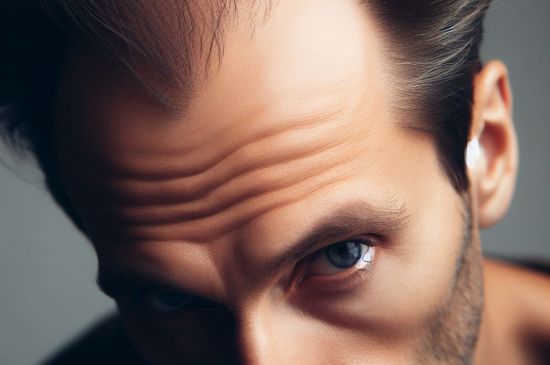The etymology of the word “alopecia” traces back from the ancient Greek word “alopex”, signifying a fox. In ancient times, foxes were sometimes observed to experience fur loss due to mange or other conditions. Today, within the medical realm, this term encompasses an array of conditions leading to hair loss in humans. This phenomenon transcends gender, affecting both men and women alike. The loss of hair can evoke a complex interplay of emotions, touching the core of one’s self-perception and identity.
Hair loss can manifest in several distinct forms, each with its own pattern and aetiology. Understanding these differences is paramount in developing treatment strategies. Here are the most common types of alopecia, along with their respective origins and therapeutic modalities:
Alopecia areata
Alopecia areata is a non-scarring circumscribed hair loss that is characterised by well-demarcated round or oval patches of hair loss due to a immune-mediated inflammation of hair follicles. It is a condition in which the immune system mistakenly attacks your hair follicles because it thinks they’re foreign invaders – bacteria, viruses, parasites or fungi – that cause infection. When this happens, your hair begins to fall out. Alopecia is categorised into various types based on the extent and location of hair loss:
- Alopecia areata totalis: You’ve lost all your hair on your scalp.
- Alopecia areata universalis: You’ve lost all your hair on your scalp and all your body hair.
- Diffuse alopecia areata: Your hair is thinning rather than falling out in patches.
- Ophiasis alopecia areata: You’ve lost a band of hair on the bottom back sides of your scalp
Unfortunately, alopecia areata cannot be cured, but there are certain medications that can help control your hair loss, such as:
- Corticosteroids: Anti-inflammatory drugs are often used to treat autoimmune diseases. They can either be injected, taken orally as a pill or applied to the skin (topically)
- Phototherapy: Uses a drug called psoralen combined with ultraviolet light
- Platelet-rich plasma (PRP): Procedure that involves extracting and concentrating a patient’s own blood platelets, which are then injected back into the body to promote tissue healing
Androgenic alopecia
Androgenic alopecia commonly known as male-pattern baldness or female pattern baldness, is primarily caused by a combination of genetic factors and hormonal changes. It is linked to the hormone dihydrotestosterone (DHT), which can shrink hair follicles over time. This genetic predisposition makes individuals more susceptible to hair thinning and loss. Treatment includes:
- Medications: Topical minoxidil 2 to 5 % and finasteride 1 mg/day. These drugs help slow down hair loss and promote hair growth
- Platelet-rich plasma (PRP): Procedure that involves extracting and concentrating a patient’s own blood platelets, which are then injected back into the body to promote tissue healing
- Hair transplantation: In cases of severe hair loss, hair transplantation surgery can be an effective option. Healthy hair follicles from one part of the body are transplanted to the balding areas.
Telogen effluvium
Telogen effluvium is characterised by a considerable hair loss that starts roughly three months after a triggering event. This may be a result of a number of things that interfere with the typical cycle of hair development. Here are some typical Telogen effluvium causes and available treatments:
Causes:
- Physical or emotional stress: Childbirth, illness, emotional stress
- Nutritional deficiencies: Inadequate intake of certain vitamins and minerals, including iron, zinc or vitamin D
- Infectious: Malaria, HIV, Tuberculosis, syphilis
- Endocrine: Hypothyroidism or Hyperthyroidism
Treatment:
- Identify and address the underlying cause: This could entail making dietary adjustments, treating any underlying medical issues, controlling stress, or addressing nutritional deficiencies.
- Nutritional supplements: If a nutritional deficiency is contributing to telogen effluvium, supplements like iron, zinc, biotin, and other essential vitamins and minerals are recommended.
- Manage stress: Engage in stress-reducing activities such as yoga, meditation or deep breathing exercises.
In conclusion, alopecia is a complex medical condition that can have significant physical and emotional impacts on those affected. Understanding the various types, causes and available treatments is crucial in providing support and care for individuals dealing with alopecia. By empowering yourself with knowledge, you will be able to make informed decisions about your hair heath. Remember, seeking professional medical advice and connecting with support groups can be invaluable resources on your journey.
The cover image was generated by Bing using DALL-E 3 technology.


 3 min.
3 min. 


